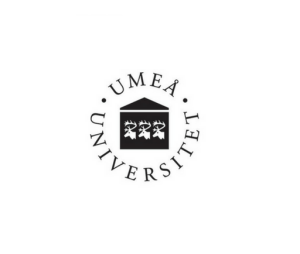 A Post-doc position (3 years) focusing on plant and microbial carbon and nitrogen cycling across the ArcticDefinitions of the Arctic vary according to environmental, geographical, political, cultural and scientific perspectives. Some scientists define the Arctic as areas having a high latitude, long winters, short, cool summers,... More is open at the Department of EcologyThe study of living organisms in their environment, including where they are found and how they interact with their physical environment and with each other, for example through food webs.... More and Environmental Sciences at INTERACT partner Umeå University. Start date is March 1st, 2023 or according to agreement. Application deadline is January 2, 2023.
A Post-doc position (3 years) focusing on plant and microbial carbon and nitrogen cycling across the ArcticDefinitions of the Arctic vary according to environmental, geographical, political, cultural and scientific perspectives. Some scientists define the Arctic as areas having a high latitude, long winters, short, cool summers,... More is open at the Department of EcologyThe study of living organisms in their environment, including where they are found and how they interact with their physical environment and with each other, for example through food webs.... More and Environmental Sciences at INTERACT partner Umeå University. Start date is March 1st, 2023 or according to agreement. Application deadline is January 2, 2023.
The position is part of a large interdisciplinary project that aims to understand and quantify how processes during the arcticDefinitions of the Arctic vary according to environmental, geographical, political, cultural and scientific perspectives. Some scientists define the Arctic as areas having a high latitude, long winters, short, cool summers,... More winter may be decisive for overall feedbacks from arcticDefinitions of the Arctic vary according to environmental, geographical, political, cultural and scientific perspectives. Some scientists define the Arctic as areas having a high latitude, long winters, short, cool summers,... More tundraA type of ecosystem in which tree growth is limited by low temperatures. The origin of the word is from from the Kildin Sami word t?ndâr, meaning "uplands" or "treeless mountain tract". In the northern... More to the global climateThe average weather we would expect over a long period of time (seasons, years, decades). Climate varies from place-to-place across the Earth. Climate is determined by long-term (over at least... More. ArcticDefinitions of the Arctic vary according to environmental, geographical, political, cultural and scientific perspectives. Some scientists define the Arctic as areas having a high latitude, long winters, short, cool summers,... More ecosystems store large amounts of organic carbon in plants and soil. Uptake of carbon by arcticDefinitions of the Arctic vary according to environmental, geographical, political, cultural and scientific perspectives. Some scientists define the Arctic as areas having a high latitude, long winters, short, cool summers,... More plants is strongly limited by their access to nutrients, especially nitrogen, due to competition by microbes. Year-round carbon and nitrogen balances thus depend on the seasonality of the activities of plant and microbial communities, and their synchronization. In the ArcticDefinitions of the Arctic vary according to environmental, geographical, political, cultural and scientific perspectives. Some scientists define the Arctic as areas having a high latitude, long winters, short, cool summers,... More, climate changeAccording to the United Nations Framework Convention on Climate Change, climate change is change in the climate of the whole Earth or a region of the Earth that is believed... More is especially pronounced during autumn, winter and spring, which may cause asynchronies of these processes, leading to increased carbon and nitrogen losses and positive climateThe average weather we would expect over a long period of time (seasons, years, decades). Climate varies from place-to-place across the Earth. Climate is determined by long-term (over at least... More feedbacks.
